Santa Eulalia Schooner, Barcelona
On the Moll de la Fusta embankment near the Rambla del Mar Bridge, the largest exhibit of the Barcelona Maritime Museum is moored-the schooner Santa Eulalia (Spanish Saint Helena).
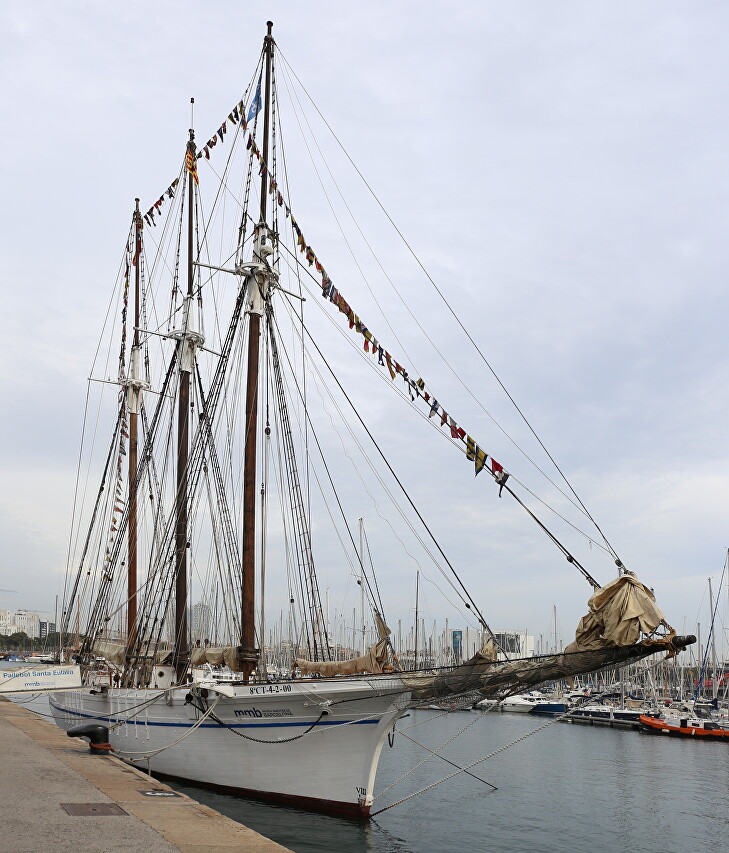
The ship was built in January 1919 at the shipyards of Torrevieja. It was used mainly for transporting grain, wood, salt and ore across the Mediterranean, and the schooner received its first name "Carmen Flore" in honor of the shipowner's daughter.
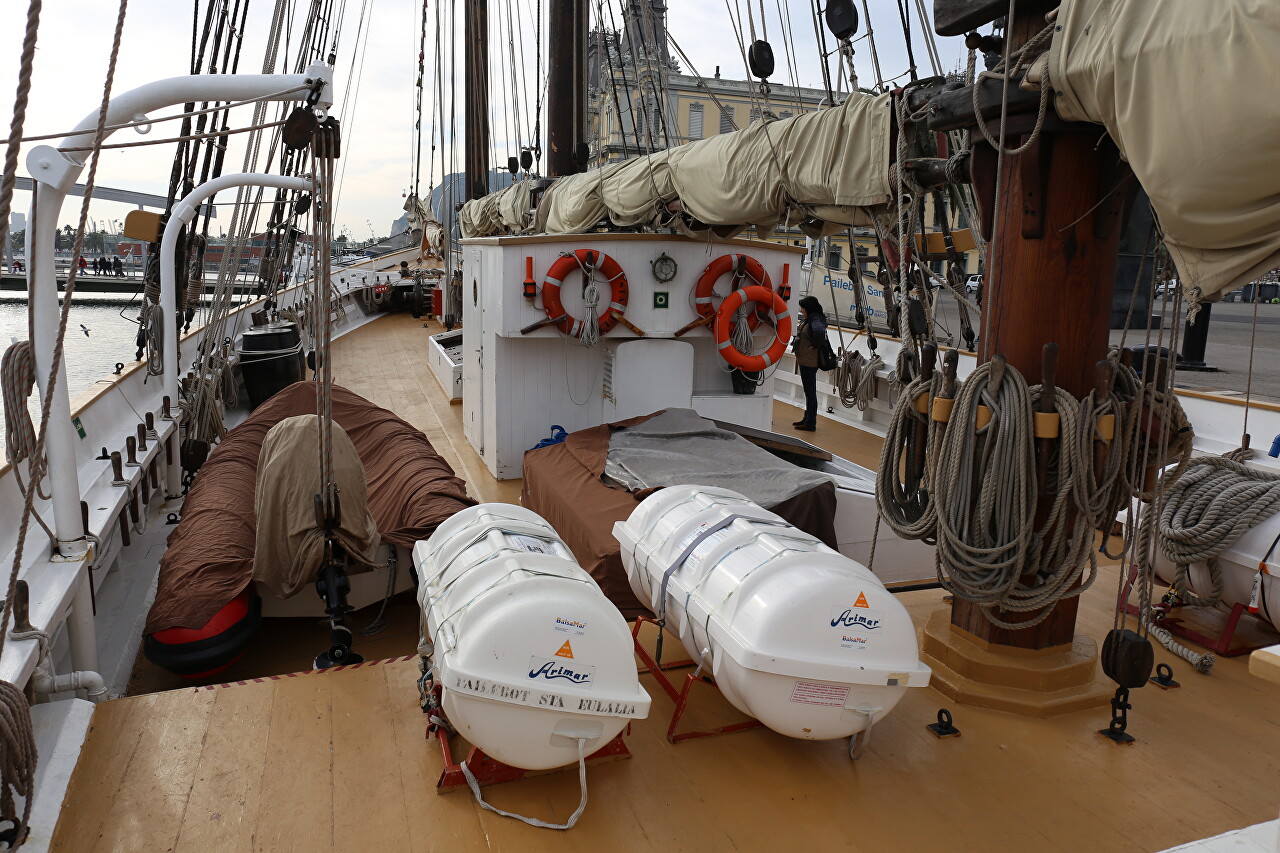
The schooner was built as a three-masted and for a long time was a purely sailing ship. In 1928, the schooner was upgraded - the middle mast was removed and a diesel engine was installed.
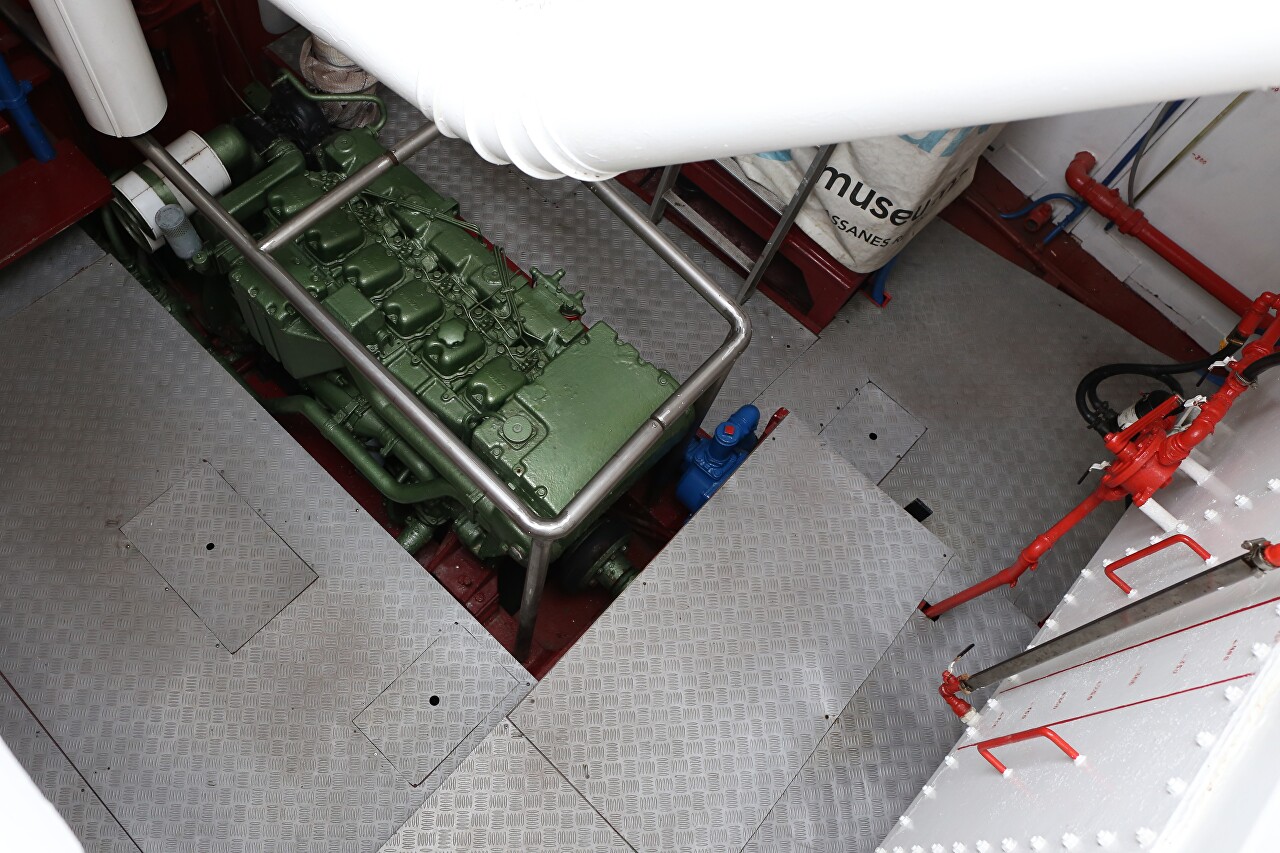
In 1931, it acquired a new name, "Puerto de Palma" and was used for smuggling between Barcelona and the Balearic Islands, for which it was subsequently confiscated.
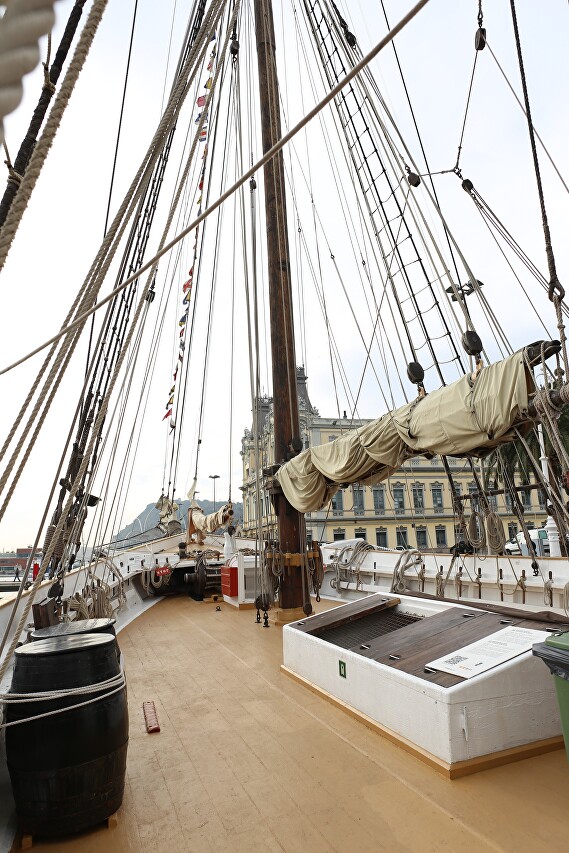
For the next 40 years, the ship served to transport passengers and cargo, until in 1973, another new owner converted it for underwater and rescue operations, at the same time renaming it Sayremar One.
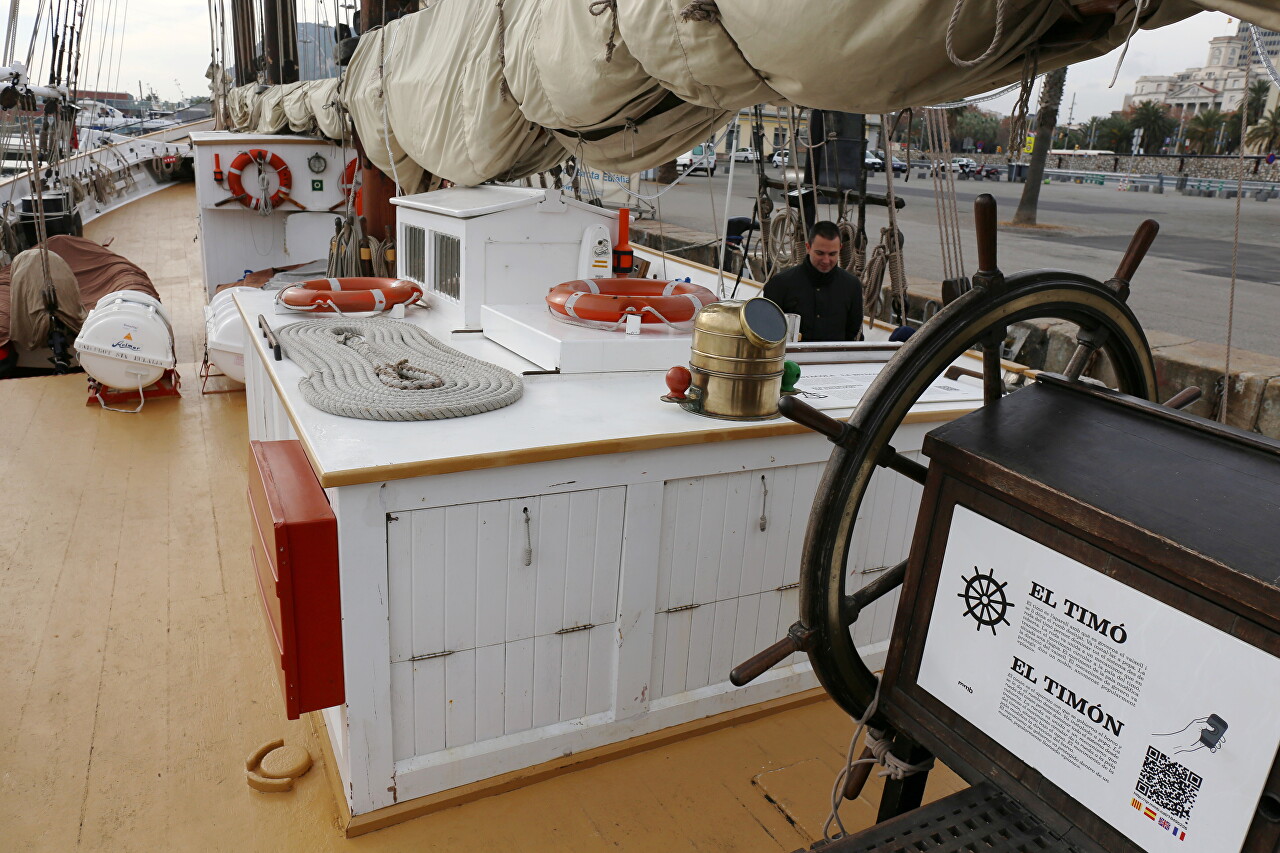
Finally, in 1997, an old and badly battered ship was auctioned off by the Barcelona Maritime Museum. After collecting historical and technical information that allowed us to recreate the original appearance of the three-masted schooner, painstaking restoration began in 1998.
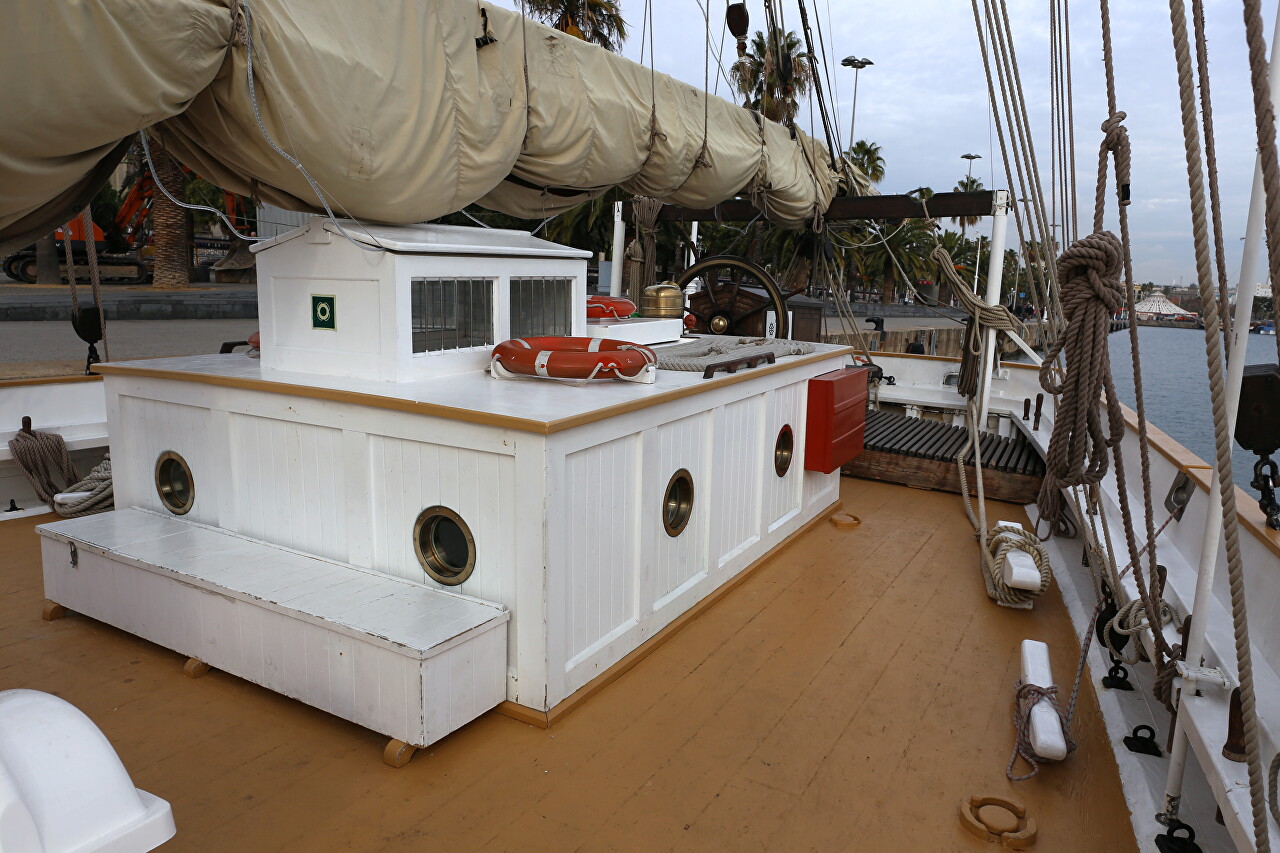
The schooner again became a three-masted schooner, all rigging was updated, the spar was repaired. It was the first such experience of a Maritime Museum and one of the first in all of Spain. The schooner received its new name in honor of Saint Eulalia, the patron saint of Barcelona. The ship belongs to the Pilot's boat class (Spanish Pailebote), the name comes from small sailing schooners used by pilots (pilots )of British ports in the second half of the 19th century. Later, this type of vessel was also used for cargo transportation. Vessels of this type have two or three masts of the same height, equipped with Bermuda sails, are easy to operate and develop good speed. Another distinctive feature of the sailboat is the boom boom in the bow itself, which makes it very easy to control the foremast's front sail, which ensures high maneuverability.
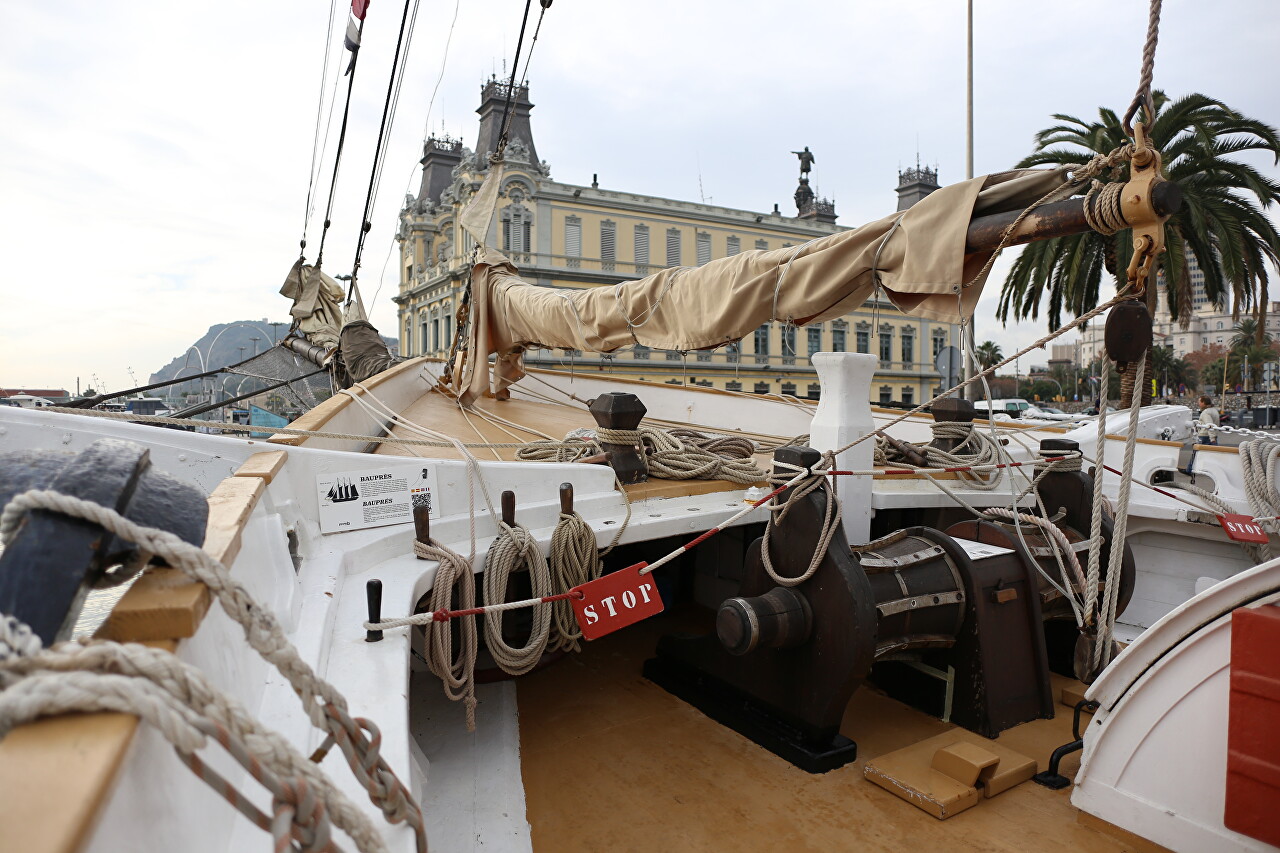
The living quarters are located in the aft part, where you can go down a steep ladder.
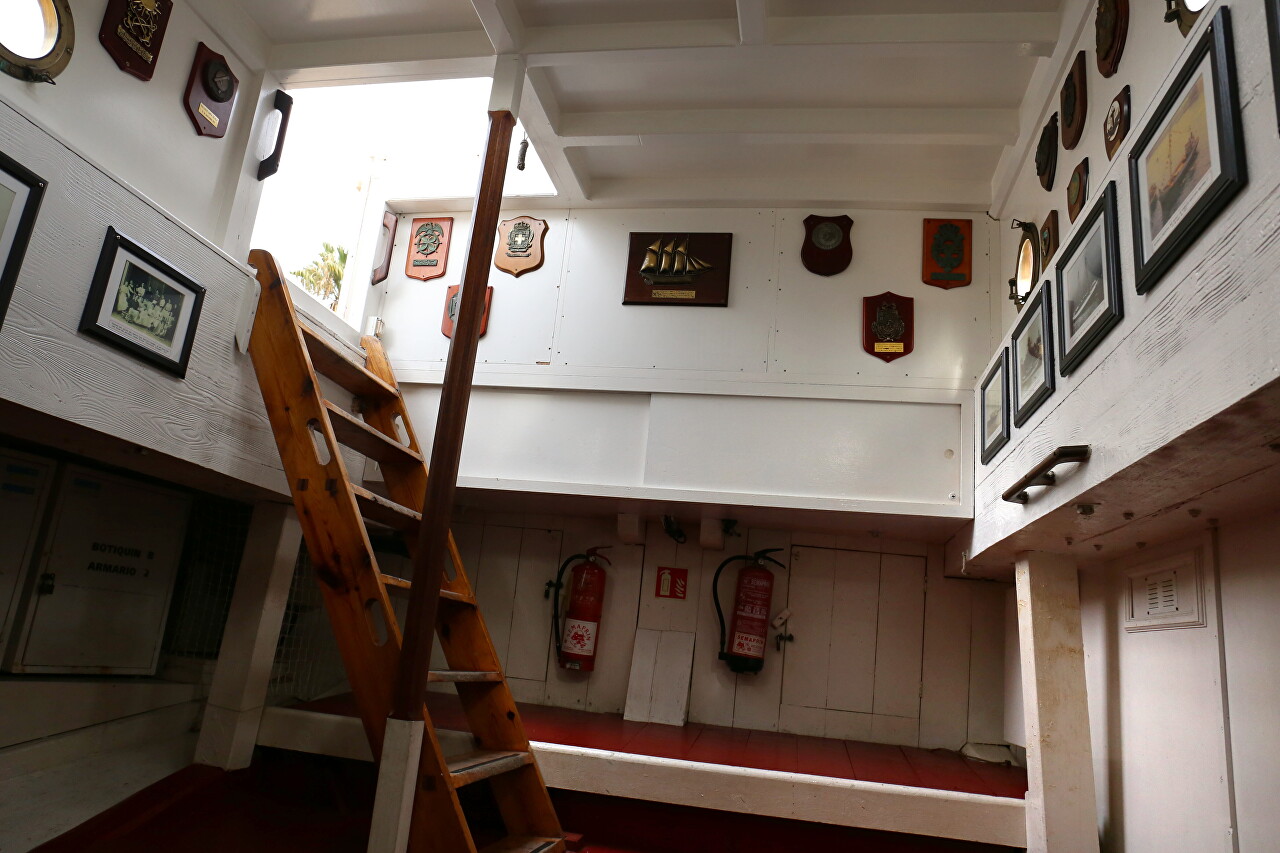
The crew on ships of this type was small and was located in one compartment.
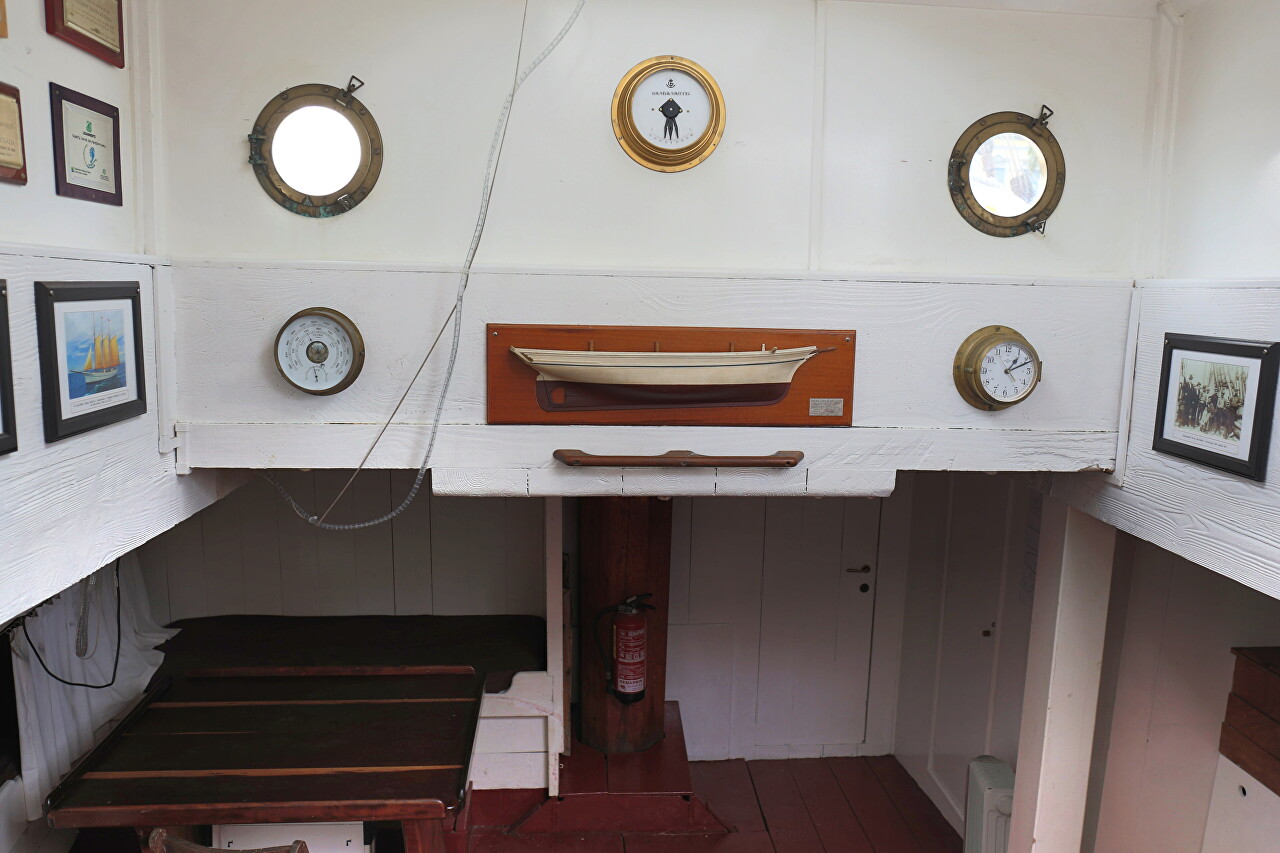
In the room you can see bunks for sleeping, lockers for personal belongings, and tables for eating with characteristic sides at the edges, so that dishes do not roll off the table during pitching.
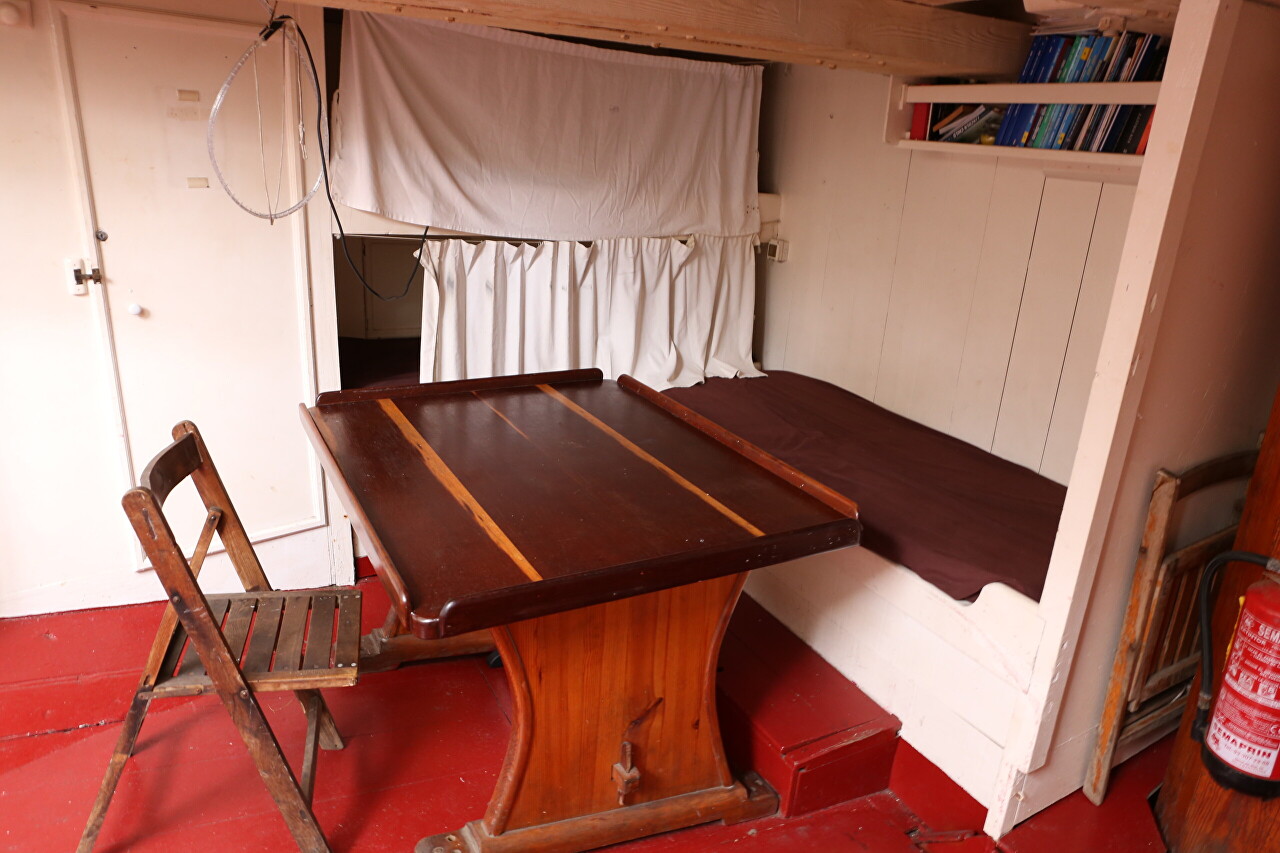
There is also a selection of old photos and drawings of vessels of this type.
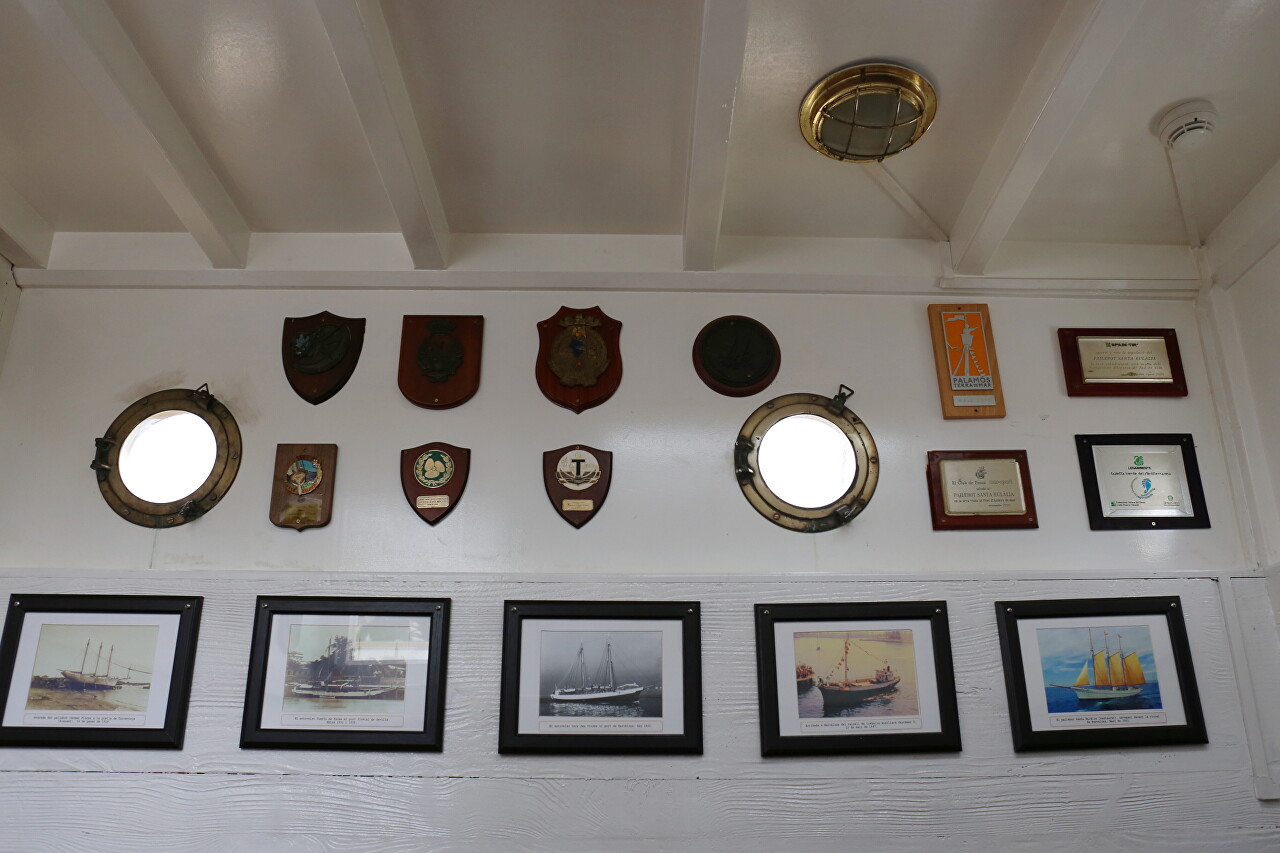
As well as commemorative signs about the participation of parades of historical courts in Lisbon, Palermo and Venice.
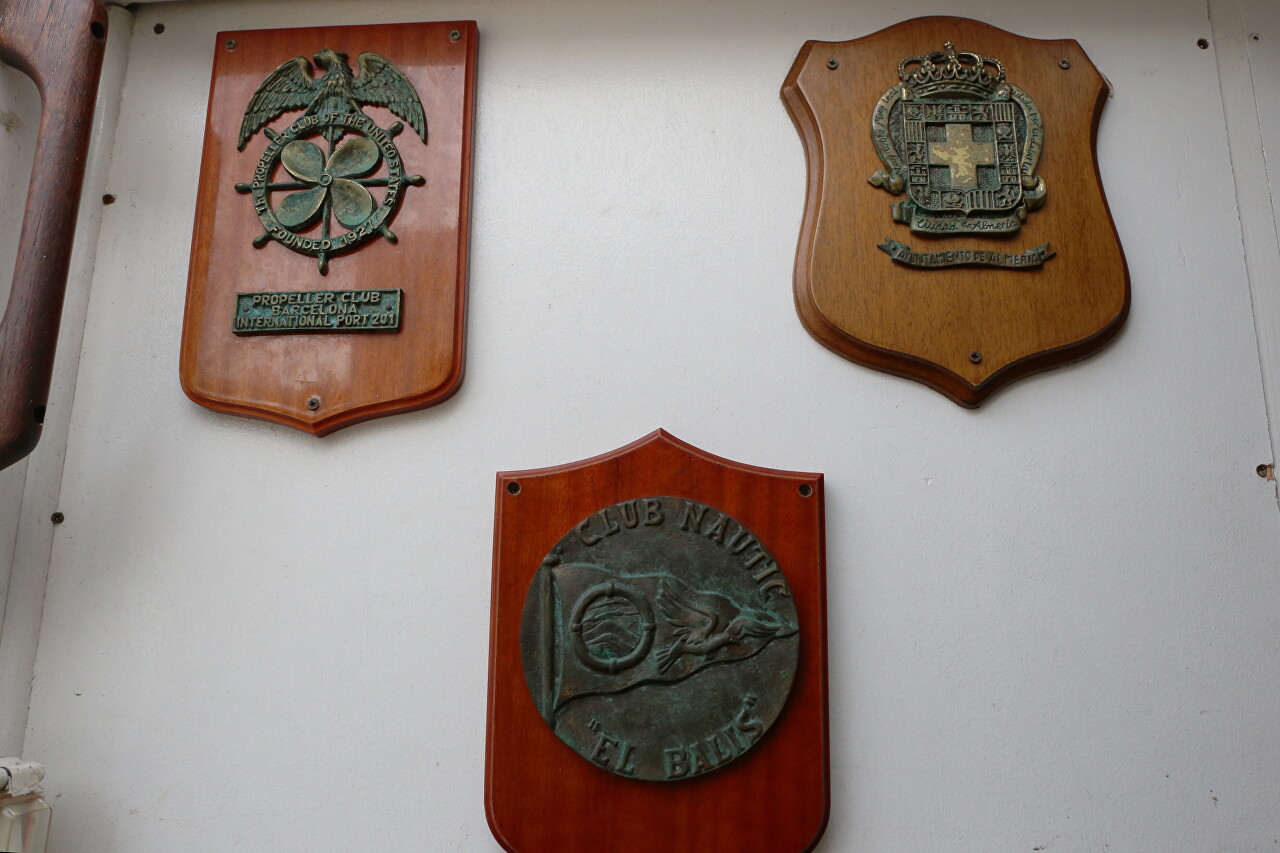
The bow compartment on sailing ships is traditionally used for storing sails and rigging, fishing gear. Here they are also engaged in their repair, as well as other repair work.
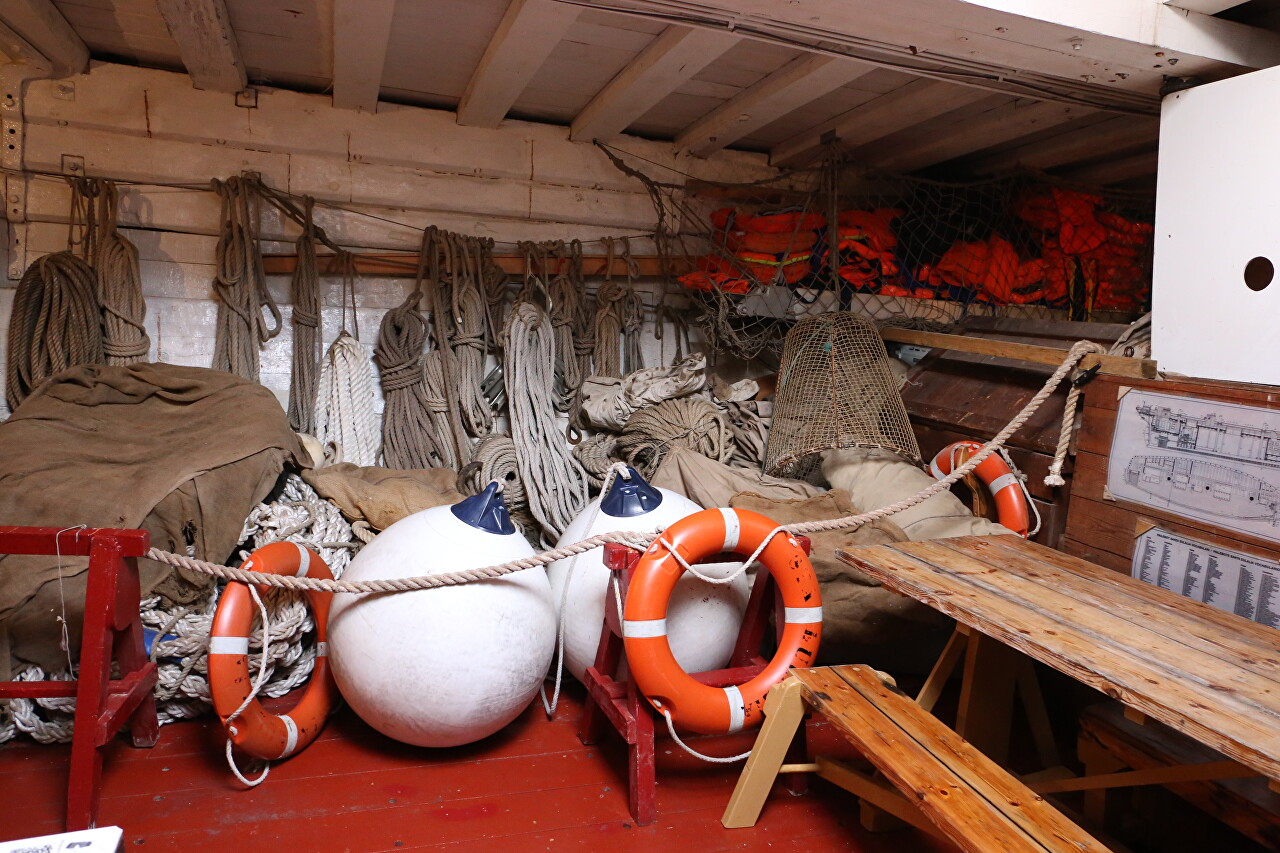
The superstructure contained a small galley. Plumbing equipment, of course, is modern, but everything else corresponds to the appearance of the early 20th century.
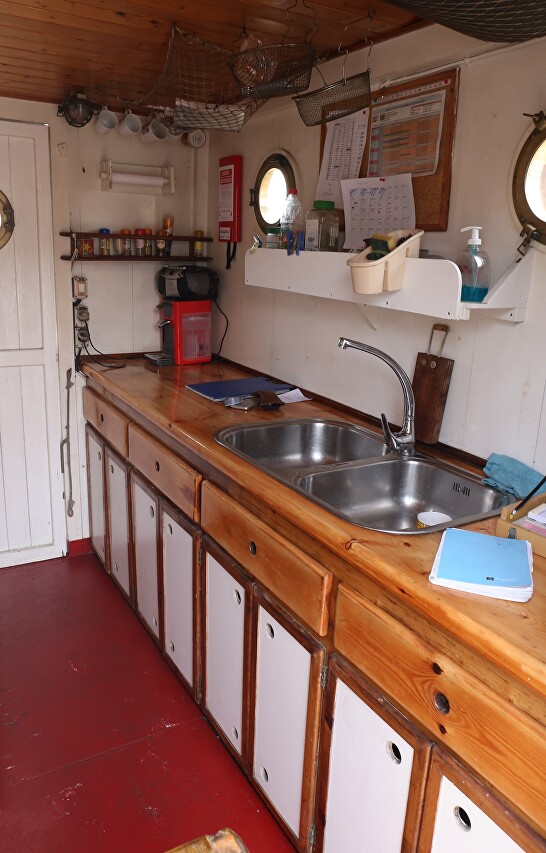
Ship's bells appeared in the British Navy in the 15th century, then spread to other countries. The bell served as a clock, its sound was heard every half hour, and was also used to give signals in the fog. The bell was and remains an indispensable attribute of ships, bearing its name on its surface.
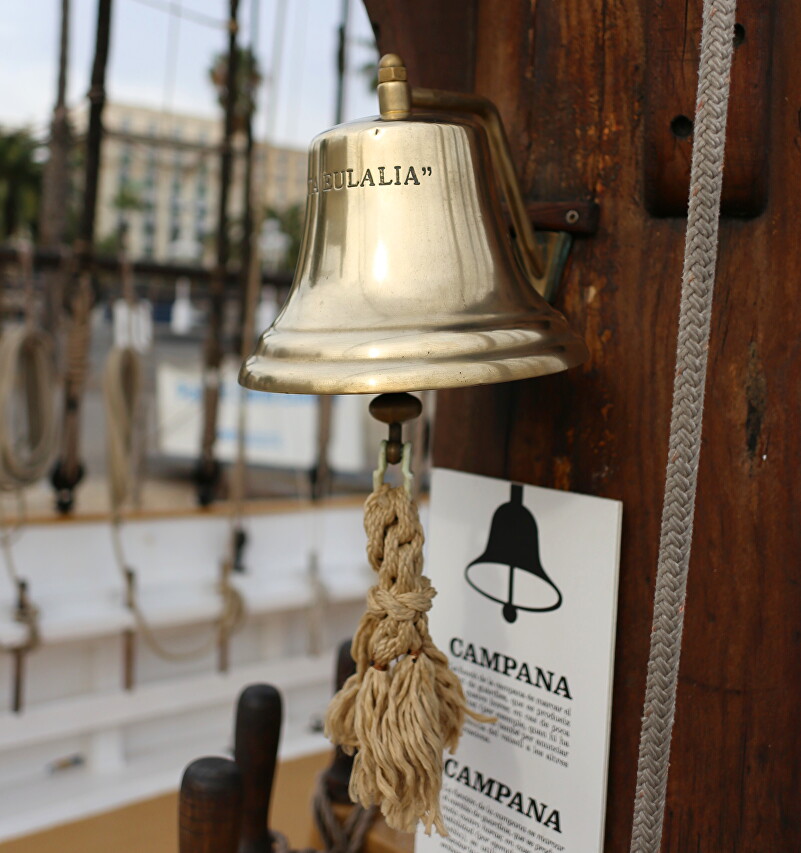
The schooner is open for inspection daily, except Monday, in the morning from 10 am to 8 pm, a break from 13: 30 to 14: 30. A visit to the ship is included in the ticket price of the Maritime Museum.
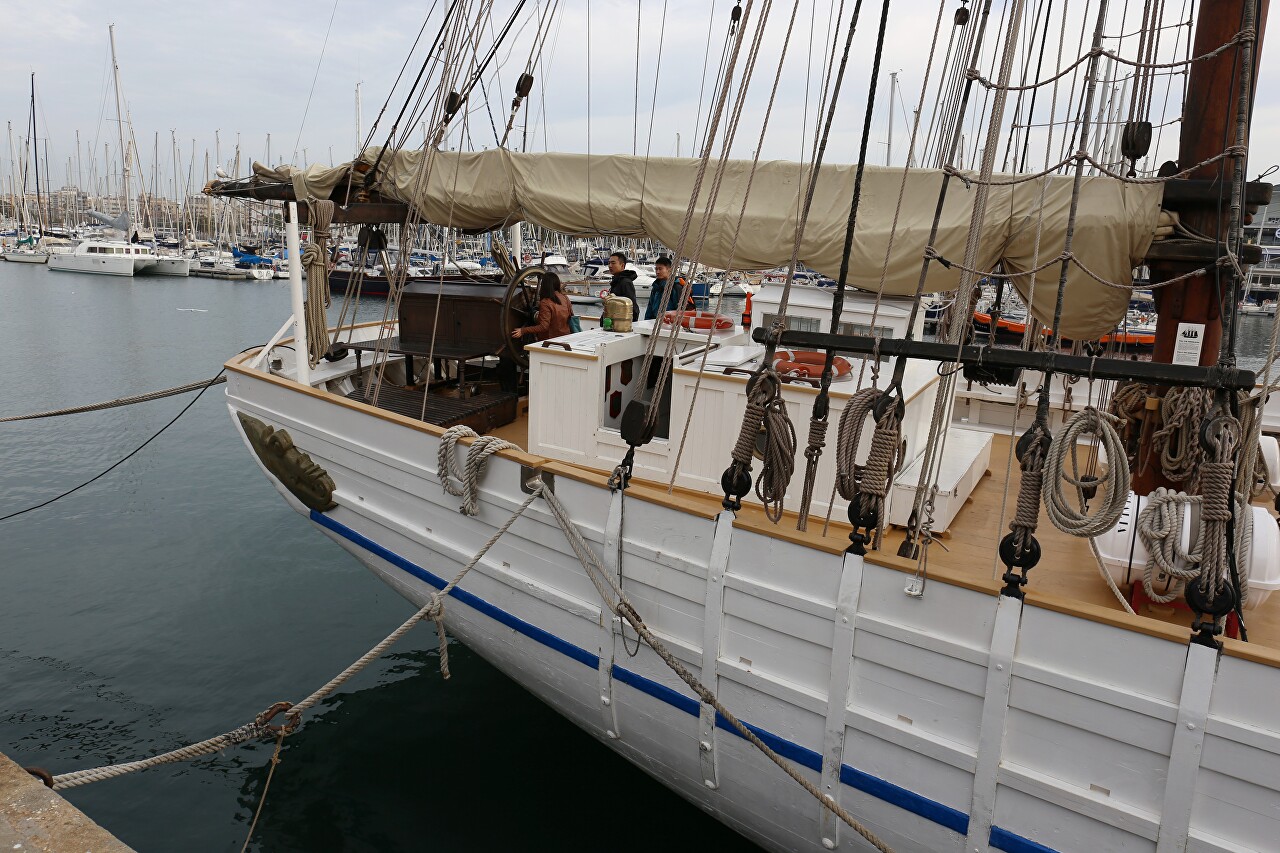
During the summer period, access is open on Saturdays from 14:30, because in the morning "Saint Eulalia" departs for a three-hour cruise along the coast of Barcelona. You can book a boat trip by phone or email (up-to-date information is available on the museum's website).
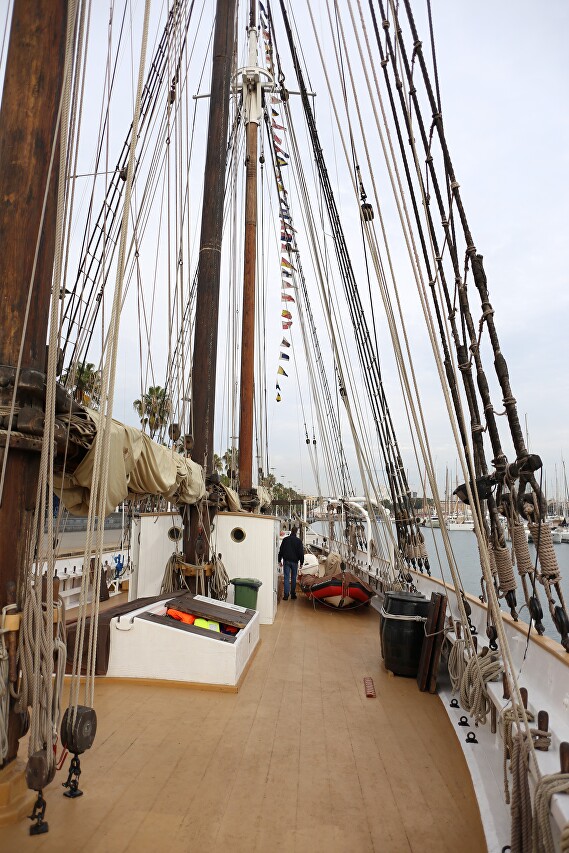
In terms of the number of museums and monuments related to the history of the navy and shipbuilding, Spain occupies one of the first places in the world, second only to the "lady of the seas" of Great Britain and the United States. The Central Naval Museum in Madrid, marine museums in Cartagena, Cadiz, Malaga - not a complete list of objects that attract the attention of lovers of naval history.